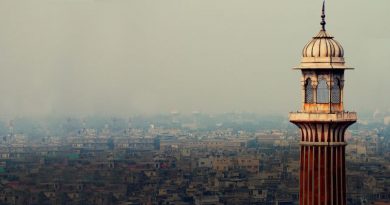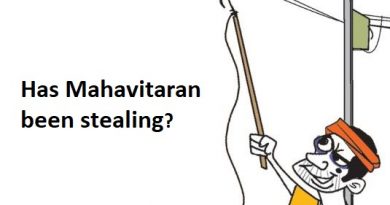Indian Minister Releases ICAP Draft, Green Body CSE calls it Myopic
 Not cool
Not cool
September 17 was marked as a World Ozone Day, and Indian Union Environment Minister Harsh Vardhan marked this occasion by releasing a draft India Cooling Action Plan (ICAP) during the celebrations.
The draft made India the first country in the world which came up with a document to address the cooling requirements across sectors and laying down actions which can help reduce such demand.
Interestingly this action plan comes barely two months after a report from the IEA, that was presented in New Delhi, with a special focus on India, on ‘The Future of Cooling‘.
The India Cooling Action Plan (ICAP) draft is out in the public domain and open for comment to which Centre for Science and Environment (CSE) which assessed it called it as inadequate.
INDIA COOLING ACTION PLAN (ICAP)
In principle, India Cooling Action Plan (ICAP) aims to assess the cooling requirements and the associated refrigerant demand and energy use across sectors in next 20 years. The plan includes developing a research and development innovation ecosystem for indigenous development of alternative technologies.
ICAP draft focuses on providing skills to RAC service technicians and suggests interventions in each sector to provide for sustainable cooling and thermal comfort for all. It also aims to map the available technologies to cater to the cooling requirement including passive interventions, refrigerant-based technologies, and alternative technologies such as not-in-kind technologies.
MOEFCC SETS FOLLOWING GOALS UNDER ICAP DRAFT:
- Reduction of cooling demand across sectors by 20 per cent to 25 per cent by the year 2037-38
- Reduction of refrigerant demand by 25 per cent to 30 per cent by the year 2037-38
- Reduction of cooling energy requirements by 25 per cent to 40 per cent by the year 2037-38
- Training and certification of 100,000 servicing sector technicians by the year 2022-23, in synergy with Skill India Mission
CENTRE FOR SCIENCE AND ENVIRONMENT’S COMMENT ON ICAP
The Centre for Science and Environment (CSE) on September 18, dismissed the India Cooling Action Plan draft as ‘grossly inadequate’ and defined it as limited in scope. The body strongly asked for immediate revision of the ICAP document to address the serious gaps which it said if not rectified now can lock in ‘irreversible’ energy guzzling.
According to media reports, Anumita Roychowdhury, executive director-research and advocacy, CSE said that if we are planning to provide ‘sustainable cooling’ and ‘thermal comfort for all’, we cannot ignore the need of thermal comfort for 90 per cent of the country’s population, and also the requirements of a range of other services including agricultural cold chains, provision of safe vaccines, and many other services that require cooling to function.
“This lack of planning can completely upset the energy budget of the country,” said Roychowdhury, adding, “At the same time, the ICAP has not indicated the benchmark for thermal comfort that needs to guide energy efficiency measures for all users of active as well as passive cooling.”
CSE calls Draft Myopic
While the ICAP aims to provide sustainable cooling and thermal comfort for all, its actual intent is “myopically” focused on only the market for personal air conditioners, ignoring the fact that demand for cooling is driven by people and not by the sale of air conditioners, say CSE analysts.
The CSE said ICAP must capture equity issue, ensure thermal comfort for all without over-dependence on active cooling. The green body said the ICAP must take note of the fact that about 60 per cent of current space cooling energy consumption is by top 10 per cent of the population.
Over 96 per cent of transport cooling energy consumption is due to personal cars (13.5 per cent of population) and this small minority skews electricity demand and locks in enormous carbon energy guzzling.
“In Delhi, 25-30 per cent of annual energy consumption is because of thermal stress; in peak summer, when energy demand soars, it is as much as 50 per cent of energy consumption,” said CSE.
“When temperature drops, energy consumption in the city drops dramatically – from 6,346 MW to 3,323 MW (10 degrees Celsius drop leads to 48 per cent demand drop in energy, irrespective of the time of day). This points to the importance of cooling and heating in energy management,” it added.
The body said that ICAP needs immediate ”overhaul”. It pointed out that India needs thermal comfort defined to guide interventions for energy efficiency in buildings and there is also a need to estimate cooling demand based on thermal comfort definition and not on sales of ACs.
“National building codes should be amended to ensure all buildings are designed in a way that indoor conditions do not get hotter than the national goal for majority of hours in the year using passive design,” CSE said, adding there is also a need for more robust standards, labelling and testing methodology for ACs.
Last month, The Bureau of Energy Efficiency (BEE) announced that it is planning to introduce ‘energy conservation building code’ for residential buildings to help reduce domestic consumption. The BEE wants to tweak the existing energy conservation building code for commercial complexes like malls, institutions and office buildings to suit residential complexes.
The bureau has been working with household equipment manufacturers including air-conditioner makers for bringing down domestic and commercial power consumption. It hopes to achieve power savings of 40 GW by 2030 with the help of stricter conservation norms for ACs. In 2017-18 about 70 lakh cooling appliances were sold, and the number is likely to rise to 1.5 crore in the next five-six years.
But these moves address only one side of the coin, the non-industrial side. The industrial and the agricultural sectors still needs better law frames and codes. Food and Grains require cold storage as do the livestock market for storage, transport and exports. Hence a comprehensive study to give actual assessment of cooling and thermal needs in our country will bring a much better and well -adjusted picture. To draw a parallel with our city transportation systems, where a foolish focus on private vehicle owners has only led to horrible congestion, unacceptably high health issues, and a rotting public transport system. When car owners barely made up 5% of total travellers on road. All this, presumably to support a manufacturing ecosystem for vehicle manufacturing. One hopes its a mistake that won’t be repeated, even as summers get hotter, and winters, warmer.




